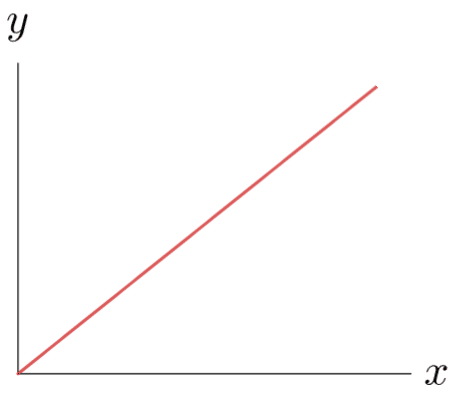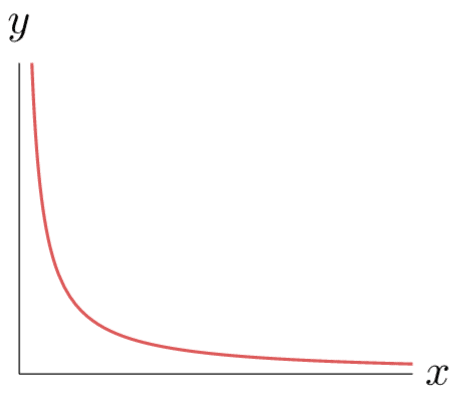This page contains the GCSE AQA Mathematics proportional Questions and their answers for revision and understanding proportional.
In maths, we say that two quantities are proportional if as one of them changes, the other one also changes in a specific way. There are two types of proportionality that you need to be familiar with.
Direct Proportionality
If two quantities, A and B, are directly proportional, then as one increases the other also increases at the same rate, e.g. as one doubles, the other one also doubles. To express this, we use the proportionality symbol, ∝, and write
A∝B,
which reads like “AA is directly proportional to B. However, there isn’t much we can do with A∝B as it is, so we turn it into the equation
A=kB,
where kk is the number which tells us how A and B are related. It is called the constant of proportionality. When you know the value of this constant, you can put it to good use. Let’s see an example.
Example: y is directly proportional to x. When y=24 ,x=8. Work out the value of y when x = 2.
We have that y is directly proportional to xx, i.e. y∝x. Then, expressing this as an equation we get
y=kx
In the question we’re given that when y = 24, x = 8. Substituting these into the equation above, we get 24=8×k, and so k=24÷8=3. Thus, the proportionality equation becomes
y=3x
We can now use this to work out that when x = 2 y = 3 , y=3×2=6. If you are a foundation student, you won’t explicitly be asked to form an equation like y=3x. However, you will be expected to know how to work with constants of proportionality and use such an equation, so all of this content is still important to you.
On top of all this, you should be able to recognise graphs that represent direct proportionality. The equation y=3x for example, is a straight-line graph with gradient 3 and y-intercept 0. This last point is true of all direct proportion graphs: they all pass through the origin (the point (0,0)).
If you see a graph that doesn’t, then the two quantities on the axes must not be directly proportional.

Inverse Proportionality
If two quantities, C and D, are inversely proportional, then as one increases the other decreases at the same rate, e.g. as one get three times bigger, the other one gets three times smaller. To express this, we write
C∝D1,
which reads like C is inversely proportional to D”, which is the same as saying C is directly proportional to D1”. As before, there isn’t much we can do with C∝D1, so we turn it into the equation
C=Dk,
where kk is the constant of proportionality which we want to find and then use. Let’s see an example.
Example: y is inversely proportional to x. When y=2,x=3. Work out the value of y when x=18.
We have that y is inversely proportional to xx, so we write y∝x1. Then, expressing this as an equation we get
y=k/x
In the question we’re given that when y=2,x=3. Substituting these into the equation above, we get 2=3k, and so k=2×3=6. Thus, the proportionality equation becomes
y=6/x
Therefore, when x=18, y=6/18=1/3.
On top of all this, you should be able to recognise graphs that represent inverse proportionality. The equation y=6/x for example, is a reciprocal graph (see: right) with asymptotes along both axes. Indeed, all inverse proportion graphs will have this same shape with asymptotes in the same places.
If you see a graph that doesn’t, then the two quantities on the axes must not be inversely proportional.

You may also be asked questions involving more complicated proportionalities such as E is directly proportional to v2”. In cases like these, the process is exactly the same: write the proportionality, E∝v2, which then admits the equation
E=kv2.
Then we may substitute given values into the equation in order to find k, just as before, and use the resulting equation (with a known k) to find some new value of E or v. Other than some slightly trickier equation rearranging business due to the square, these types of questions are very much the same thing. Have a go at the questions below to see.
